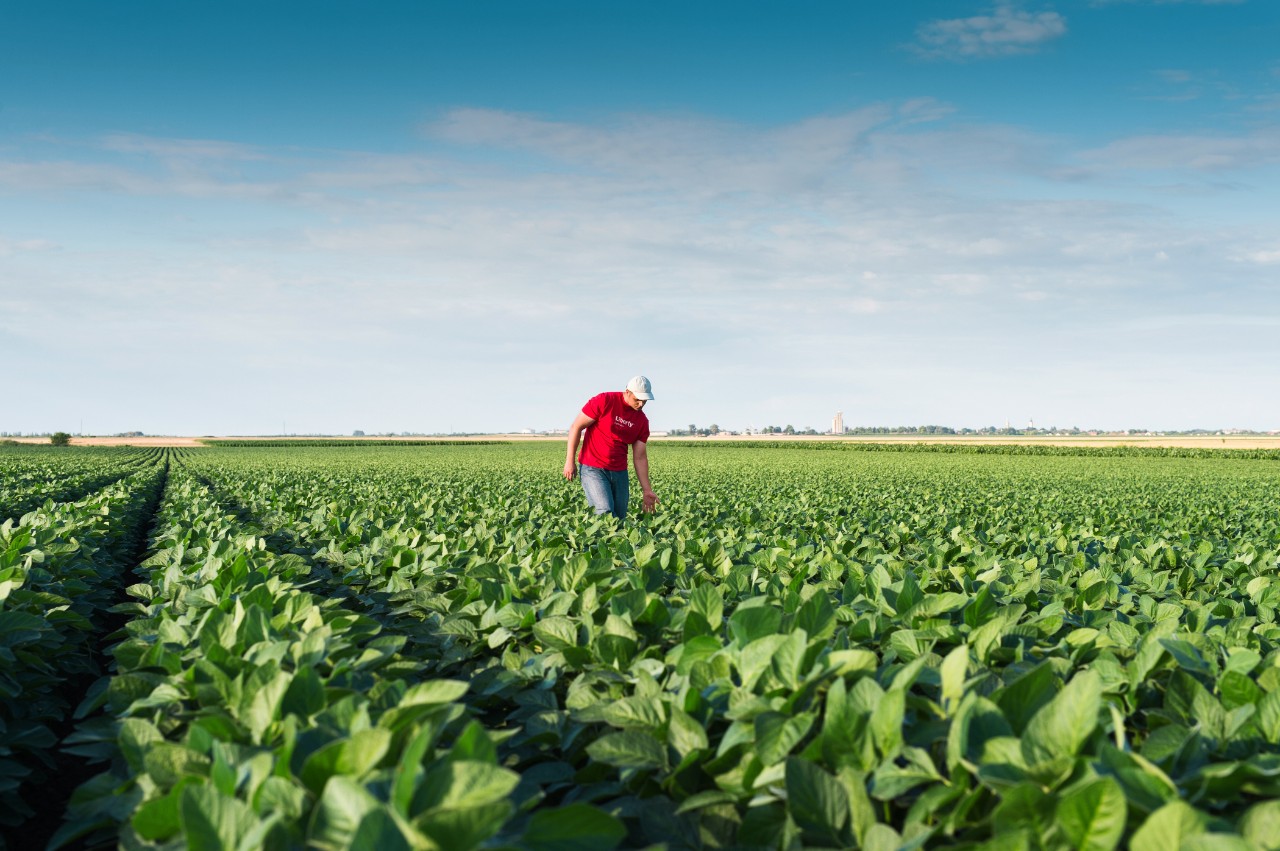Liberty Herbicide Application Best Practices

Fight Weed Resistance with These Best Practices for Liberty Herbicide Application
Few issues you face are as significant or economically impactful as weed resistance. Fortunately, there are multiple soybean trait platforms and herbicide technologies available to arm you with a variety of tools to manage resistant weeds on your farm. While waterhemp, Palmer amaranth and other tough weeds continually try to best soybean fields each year, you can fight back for a successful crop. That means always getting the most out of every herbicide application. Proper stewardship goes a long way to maximizing the efficacy of each application and could be the advantage you need to stay ahead of weeds and increase potential yields.
Liberty® herbicide is one of the best tools available to manage tough weeds and mitigate resistance for soybean farmers, and it is available as part of most soybean trait systems. Backed by the support and confidence of your BASF team, when you apply Liberty herbicide according to label instructions and follow the S.T.O.P. guidelines, we guarantee commercially acceptable weed control. Follow these best practices to get the most out of your Liberty herbicide application.
S.T.O.P. Application Guidelines
S: Start clean and stay clean. Conventional tillage or a burndown herbicide application gives your crop an advantage heading into planting. In addition, starting with a strong pre-emergence residual herbicide, like Zidua® PRO herbicide, reduces in-season weed pressure and allows for effective post-emergence spray coverage from Liberty herbicide later in the season.
T: Target weeds smaller than 3 inches at the time of application to ensure adequate coverage and effective treatment. Pigweed can grow up to 2.5 inches per day, double the rate of soybeans, and can produce up to 600,000 seeds per plant.2 As a contact herbicide, coverage of each growing point on the weed is critical for Liberty herbicide applications. Simply put, smaller weeds are easier to control.
O: Optimize coverage to ensure your Liberty herbicide application is reaching and covering the intended weeds in the field. You should also make sure your droplet size is appropriate. That means applying Liberty herbicide at an application rate of 32 fluid ounces per acre, with a spray volume of at least 20 gallons of carrier per acre and a nozzle droplet size of medium- to coarse-sized droplets for good coverage on the weed surface.
P: Pair with residuals. Waterhemp and Palmer amaranth can emerge throughout the season, so pairing Liberty herbicide with a residual herbicide is a great tool to extend your window of control through canopy closure. Adding a residual like Outlook® herbicide or Zidua SC herbicide provides multiple effective modes of action to prevent weed resistance and an extended window of control to help minimize late-season weed escapes, which means less weed seed added to the soil seed bank for next year.
Optimizing your Liberty Herbicide Application Timing
Liberty herbicide is a light-activated herbicide, which means the time of day you apply is important to maximize efficacy of application. While higher temperatures and relative humidity are also important, sunlight is the main driver of Liberty herbicide activity in weeds and its overall effectiveness. Ideal timing for Liberty herbicide is two hours after sunrise and two hours before sunset.
Importance of AMS
AMS is a key component to include in the tank when applying Liberty herbicide. It helps soften the water by tying up antagonistic calcium and magnesium ions and increases the overall activity of the herbicide. AMS provides free ammonium ions to help Liberty herbicide maximize its efficacy for control of tough weeds. BASF recommends 1.5 to 3.0 pounds of AMS per acre. For local recommendations, talk to your area BASF representative.
Importance of Sprayer Setup
Being meticulous pays off when it comes to cleaning and calibrating your sprayer, preparing your spray solution and selecting the appropriate nozzles for the herbicide you’re applying. Oversight on sprayer hygiene can be untimely and inconvenient. It’s easier to be prepared up front than to run into issues later.
It’s critical to make sure you’ve thoroughly cleaned your sprayer when switching from one herbicide to another to prevent crop response from lingering spray residue. Sprayers have complicated plumbing, and even a tiny bit of residue can have an impact that could affect crops. Use a triple rinse procedure to ensure the system is thoroughly cleaned.
Mixing order matters when preparing your spray solution to avoid unintended consequences of incompatible products, resulting in inconvenient downtime. A great way to remember the proper mixing order is to follow the D.A.L.E.S. method: dry products first, followed by AMS, liquid and SC herbicide formulations, emulsifiable concentrates and, lastly, surfactants.
When it comes to nozzle selection, speed and pressure should drive your nozzle choice for the best coverage. For Liberty herbicide, that means a nozzle that provides medium- to coarse-size droplets for uniform and thorough weed coverage, such as the examples in the table below.
Lastly, to ensure proper coverage of the weeds you’re trying to control, always make sure you have adequate carrier volume for your herbicide. Target 20 gallons per acre for Liberty herbicide and increase carrier volume as needed where you might need better coverage for tougher weed pressure.
Nozzle |
TT 110-06 |
TTJ60 110-06 |
GAT 110-06 |
|---|---|---|---|
| Pressure | 50 PSI | 50 PSI | 50 PSI |
| Ground Speed | 10 mph | 10 mph | 10 mph |
| Application Volume | 20 GPA | 20 GPA | 20 GPA |
| Droplet Size | Coarse | Medium | Coarse |
1 Liberty Herbicide Weed Control Guarantee Program. https://agriculture.basf.us/content/dam/cxm/agriculture/crop-protection/products/documents/BASF_2020_Liberty_WeedControlGuarantee%20Final.pdf.
2 Palmer amaranth management in Soybeans. United Soybean Board. https://weedscience.missouri.edu/publications/50737_FINAL_FactSheet_PalmerAmaranth.pdf. 2013.
3 Terms and conditions apply – please see the full Liberty Herbicide Weed Control Guarantee Program for full details.
Always read and follow label directions. Liberty®, Outlook® and Zidua® are registered trademarks of BASF. ©2022 BASF. All rights reserved.